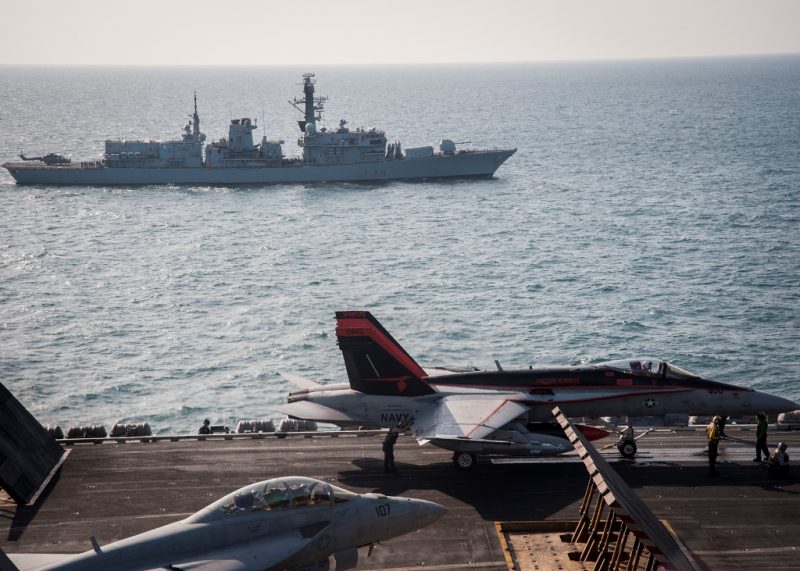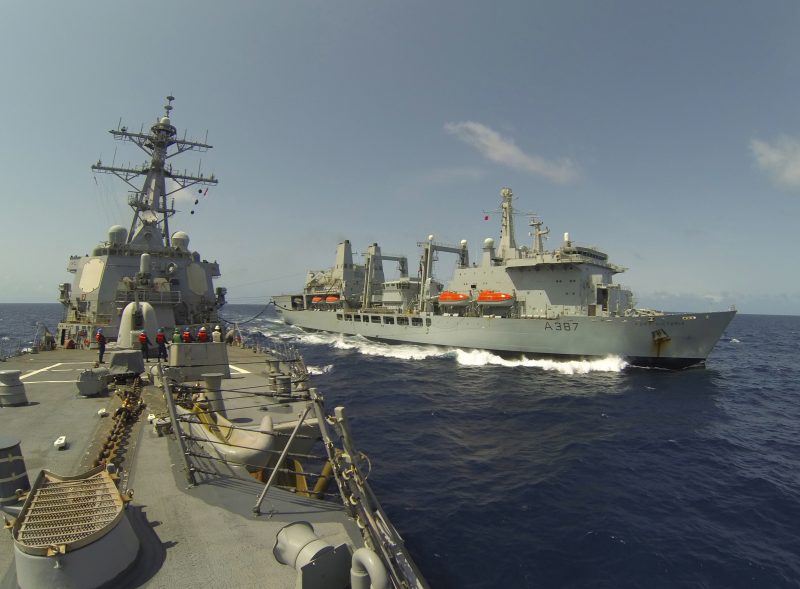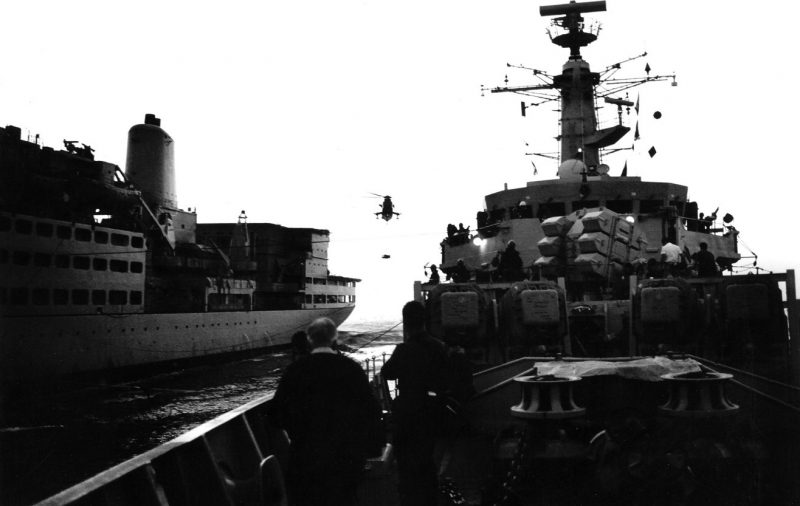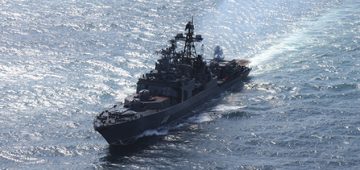
There’s been some great news for the Royal Navy recently, with a cash injection for submarines, an ‘enduring’ commitment to deploy Type 23 frigates in the Arabian Gulf, plus the Sea Ceptor Anti-air Missile (AAM) entering service.
Meanwhile, the new strike carrier Queen Elizabeth is set to make a transatlantic transit to welcome F-35B jets aboard for the first time. This is all jam and very sweet, but the Royal Navy has been forced over the past 20 years to swallow bitter pill after bitter pill of continual cuts to its numbers and capabilities – and for all we know there could soon be more blows delivered under the latest defence review.
Yet, as it has always done when asked to do more for less – or to project a global presence with barely enough people and ships to cope – the British fleet works very hard, outwardly maintaining an upbeat and positive stance. It just gets on with things.
This magazine’s admiration for the men and women of the Royal Navy remains as strong as ever. How can it not be so? Members of our team once served in a blue suit. Others have been equally privileged to see the Royal Navy in action in other capacities. Whether it has been Thursday Wars, under training off the south coast of England – providing an (always) fascinating insight into the professionalism of the Senior Service – or in conflict zones, handling arduous conditions, the RN’s people are mightily impressive to observe.
So, never be deceived by Odin’s coruscating attacks on the poor state of the Royal Navy today – they are launched out of deep and abiding concern that lessons of the past (including wars fought not long ago) are being ignored. The UK’s sons and daughters may one day soon be sent into a conflict in which they are, through no fault of their own, slaughtered due to past errors by The Management.
To be blunt, the hottest criticism of Odin and the editorial board of this magazine is reserved for the politicians who have gutted the Royal Navy across the aforementioned series of ill-advised defence cuts. Now, when the maritime threat chickens are coming home to roost, the politicos sometimes try to use spin and so-called news management to con people into thinking they are hugely strengthening the nation’s main bulwark against existential threat.
Recently, Secretary of State for Defence Gavin Williamson – who is at least taking a keen interest in naval defence, even if his predecessors of all governments hacked away his options – announced the UK is to use its new-old base in Bahrain to host a forward deployed Type 23 frigate.
It has come to something when a boast about a single frigate – in a part of the world where the UK until a few years ago often had two or three simultaneously on call – is big news. It prompted one British national newspaper – obviously lacking corporate memory of naval affairs – to declare it the ‘most serious [UK] naval deployment since 1971’. That was nonsense but whether the headline writers just got carried away, or it was Ministry of Defence spin-doctors ‘news managing’ behind the scenes is unclear. The latter do have form in playing around with actuality, notoriously describing the Royal Navy of 2018 as ‘growing for the first time in a generation’.
The obvious reality is that, while it is getting some big ships, it is smaller and less capable across the board. It is only ‘growing’ because it has been reduced so much. To be fair to Mr Williamson he did not use the same description when giving the inaugural Sir Henry Leach lecture at the RUSI Seapower Conference in London.
He actually said: “I can today announce that we will be extending that commitment by sending T23s to the Gulf from 2019 as an enduring presence.”

However, Mr Williamson (or whoever wrote his speech) was in some way pulling the wool over our eyes, for the UK did run an enduring frigate commitment – almost entirely without a break – for more than 30 years until very recently. Again, the frigate presence is only being extended because it has been so curtailed.

In truth a major frigate commitment was maintained in the Gulf for decades and often the Royal Navy presence (yes, even post-1971) was much more significant.
Enduring commitments included: Tanker War patrols/escort duties across 1980s; major task groups deployed during operations Desert Shield and Storm 1990/91; an even bigger task group for the invasion of Iraq in 2003. Frigates were also committed to enforcing an embargo on Saddam Hussein’s regime (1991 to 2003), with warships engaged in counter-terrorism and anti-terrorism patrols East of Suez on a regular basis from 1991 until a few years ago.
Meanwhile, since the 1980s there has been a permanent commitment of mine warfare vessels and auxiliaries too and they have been forward based on a permanent basis for some years. What made most of those previous ‘serious’ long-term deployments possible were enough ships, people, properly organised and funded logistical support and use of allied bases in the Gulf. One frigate permanently based in Bahrain fools no one.
The harsh truth is that, right now the UK has a small, lop-sided navy and is confronted with the cuts-driven necessity of forward basing a frigate in the Gulf to maintain even a modest RN presence. There used to be several frigates and destroyers available at sea East of Suez, either on operations, standing down (or even maintained in) friendly ports, or on their way to and from patrol stations.

That’s how sea control and effective policing, plus deterrent effect, is properly achieved in an enduring fashion.
Crucially, it also enabled showing of the flag to make friends and influence people all the way from the UK to the far-flung corners of the globe. Such wide-ranging deployments make joining the Navy a varied career, too, with each (well behaved) sailor and marine a UK ambassador.
During his RUSI lecture Mr Williamson used a quote from Admiral Sir Henry Leach, which was: “War seldom takes the expected form and a strong maritime capability provides flexibility for the unforeseen.”
Committing one frigate to the Gulf on a permanent basis, and talking up a permanent shore base, because you have cut warships and personnel numbers so badly – and cannot devote enough resources quickly enough to restoring numbers and capabilities in the near future – is the very opposite of that.

It ensures the Royal Navy’s reaction is entirely quantifiable and predictable (and so easily countered by potential foes). Being enduring out at sea and in enough numbers – and with the right capabilities to stay in harm’s way – is the best guarantee of defence and security, not just a few shore bases with sparse naval presence.






Comments
Sorry, comments are closed for this item